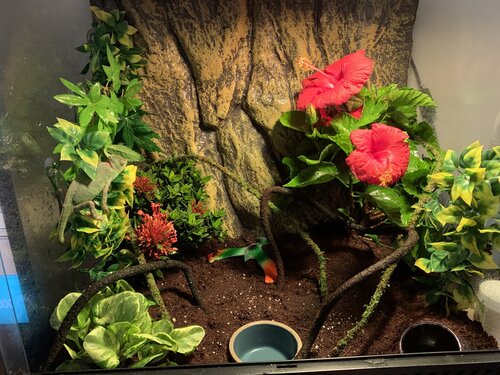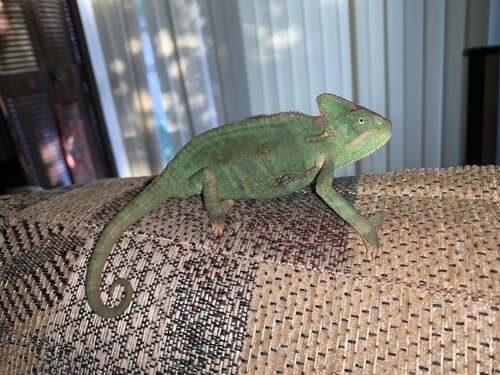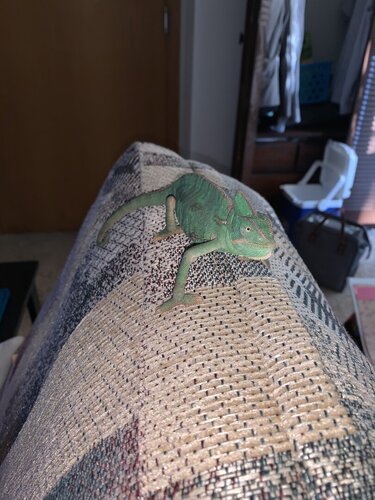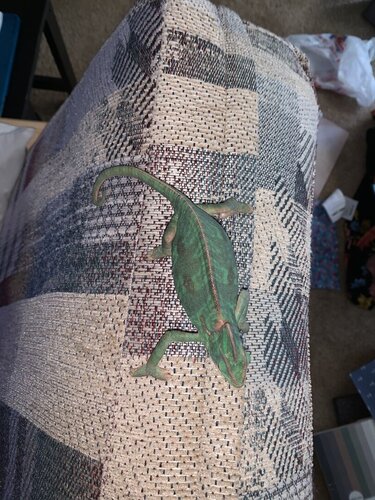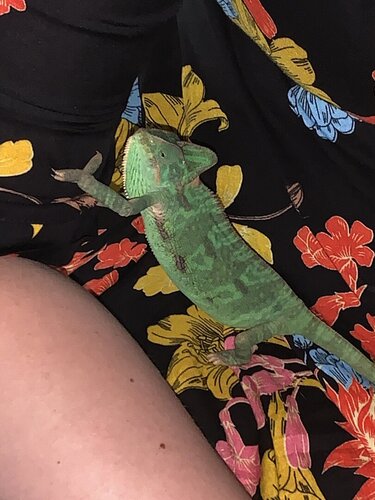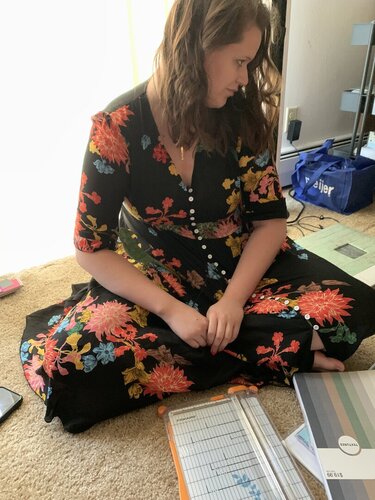sdecero
Member
Hi everyone! I have a 6/7 month old female veiled. She is a little bit of an odd ball who prefers perching at a lower positions in her enclosure. She often rests 6” of the bottom on a vine and basks the majority of the day. At night she goes into a little cove buried underground or sleeps amongst the leaves. I have about 4-8” of substrate at the bottom that varies in depth throughout her enclosure. I noticed lately that she has had an increased appetite and she started digging the other day (2 holes in total...1 in substrate and another in a potted plant. She doesn’t appear to have any eggs and I can’t see or feel any. Daytime humidity ranges from 40-90% and she is on an automatic mister. At night her humidity ranges from 25-50%. Her basking spot is 85 degrees and her far corners of the tank are 70 Her nighttime temp is room temp between 68-72.
Is this more of her personality or is there something I should be concern about/doing for her differently.
Is this more of her personality or is there something I should be concern about/doing for her differently.






